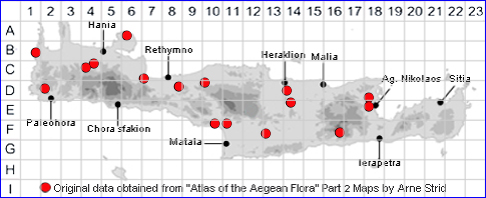
SPECIES DESCRIPTION
VINCA MAJOR subsp. MAJOR
Family:- APOCYNACEAE
Common Names:- Greater periwinkle
Synonyms:- None
Meaning:- Vinca (L) A name used by the Roman philosopher Pliny, derived from
the Latin vinculum, to overcome.
Major (L) Larger, greater, bigger.
General description:- Short to medium, spreading, evergreen subshrub, with long
arching or trailing stems, often rooting down at the tip.
Stems:-
a) Up to 100 cm.
b) ascending in the lower part, then arching or procumbent.
Leaves:-
a) 2·5-9 x 2-6 cm.
b) opposite, mostly ovate or broadly ovate (rarely lanceolate).
c) margins fringed with hairs (ciliate) of 0·1-1 mm.
d) shiny bright green, evergreen.
Flowers:-
1) Flowering stems (pedicels):
a) up to 30 cm.
b) shorter than the subtending leaves.
2) Calyx-lobes:
a) 7-17 mm.
b) very narrowly triangular, the margins densely ciliate with hairs 0·5-1 mm.
3) Corolla-tube:
a) 12-15 mm.
b) limb 30-50 mm diam.
c) lobes obliquely truncate.
d) usually bluish-purple.
Fruit:-
1) Seeds:
a) hairless (glabrous).
Key features:-
1) Leaves up to 9 x 6 cm.
2) Flowering stems up to 30 cm.
3) Hairs of calyx 0·5-1 mm.
Habitat:- Mostly in and around villages, in damp, shady, ruderalized habitats,
0-1100 m.
Distribution:-Throughout Greece, but scarcely native. - Probably originating in the
W & C Mediterranean region, widely cultivated as an ornamental and naturalized in
many areas. Fairly widespread but scarce on Crete.
Flowering time:- Mid-March to early June.
Photos by:- Steve Lenton
